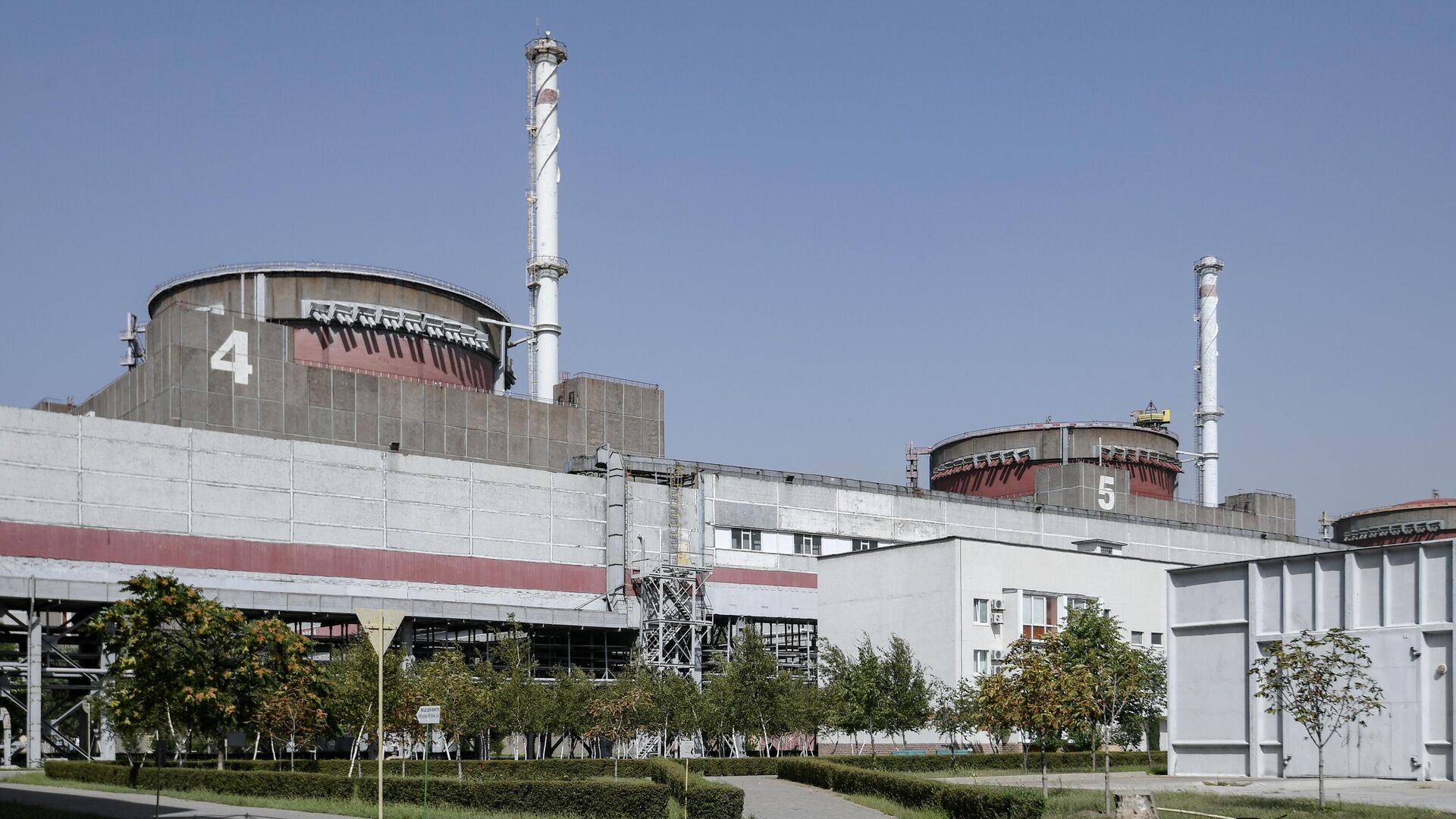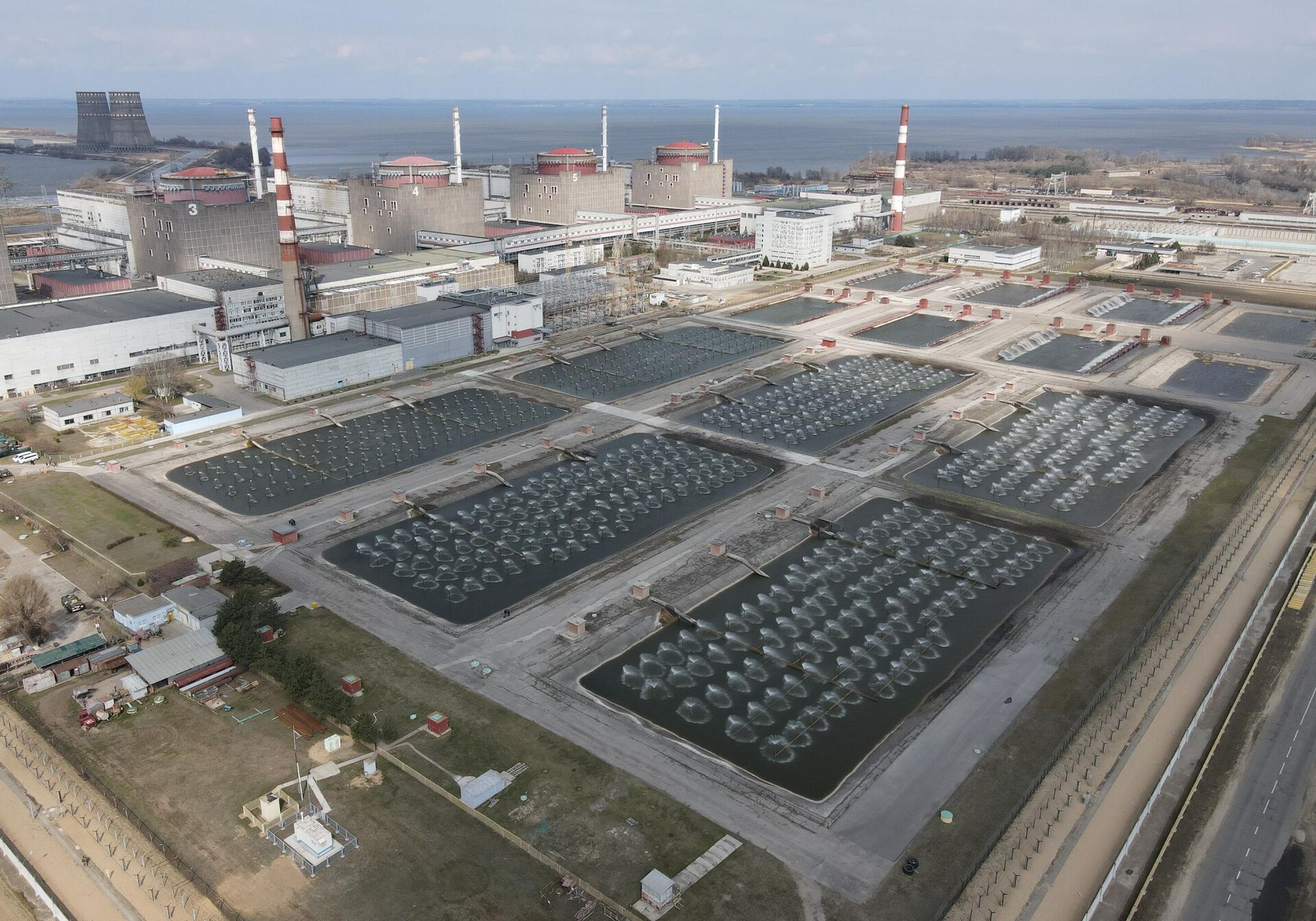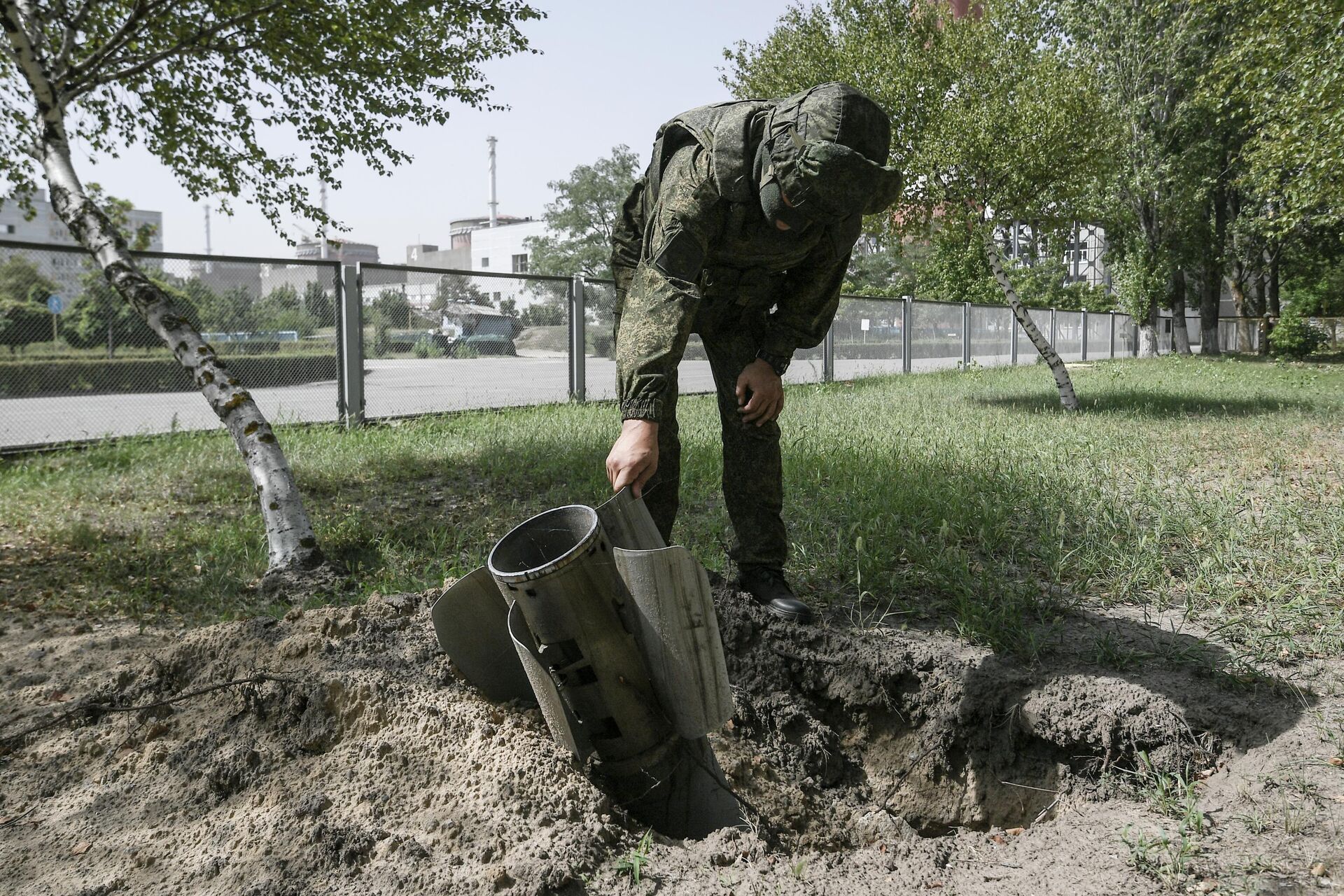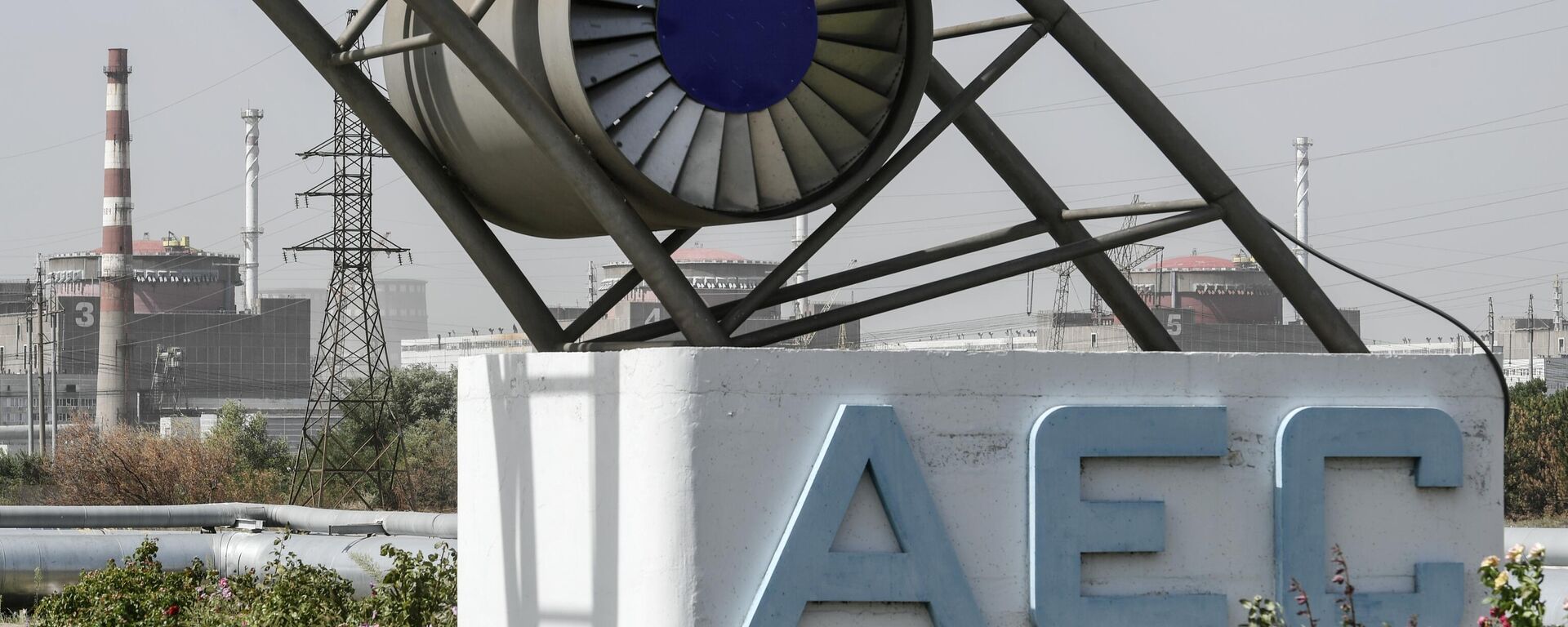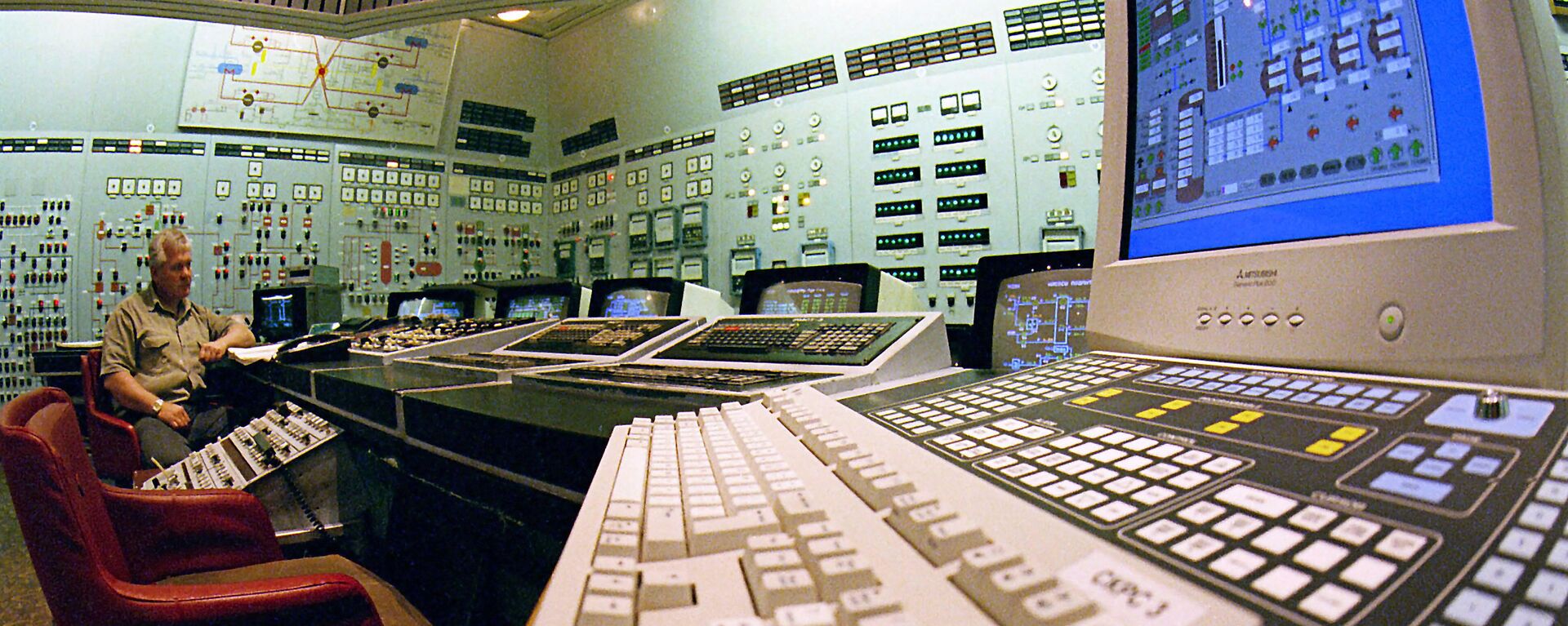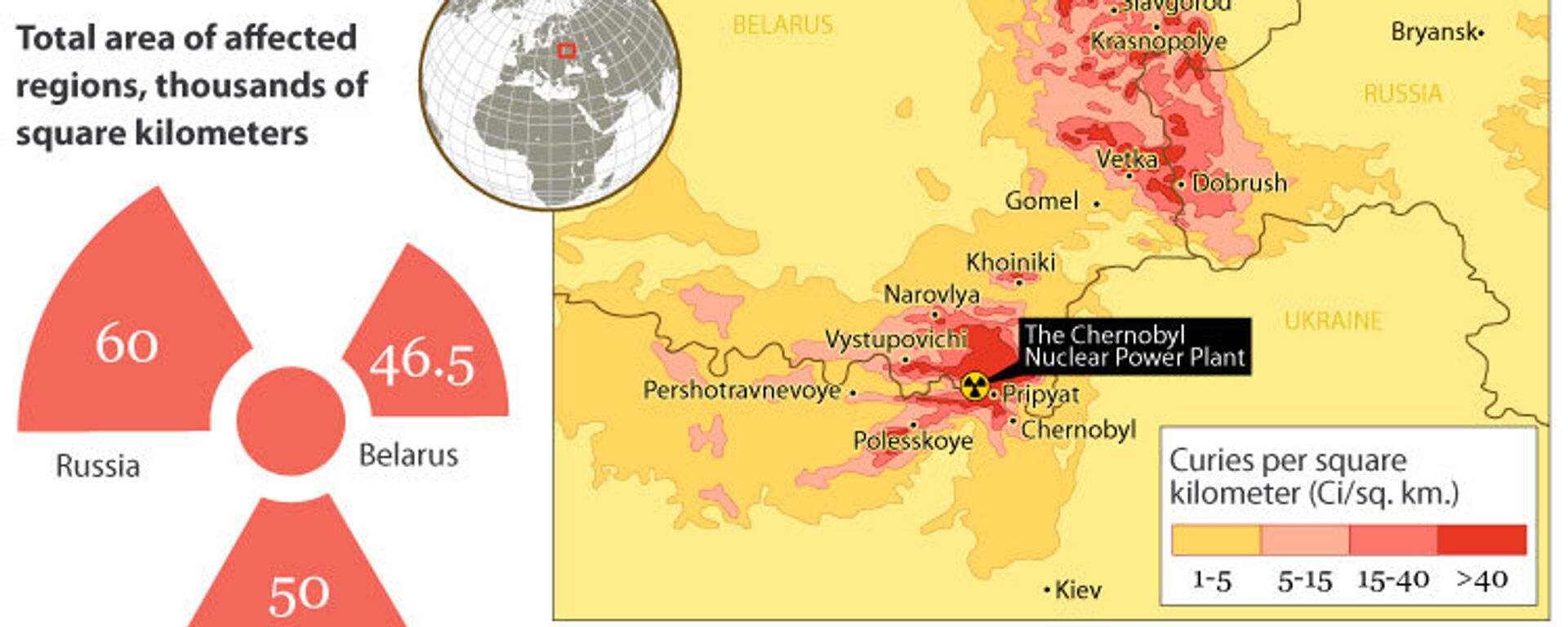https://sputnikglobe.com/20230328/what-is-the-current-situation-at-zaporozhye-nuclear-power-plant-1108857839.html
What is the Current Situation at Zaporozhye Nuclear Power Plant?
What is the Current Situation at Zaporozhye Nuclear Power Plant?
Sputnik International
What is the current situation at Zaporizhzhia nuclear power plant?
2023-03-28T15:06+0000
2023-03-28T15:06+0000
2023-07-31T16:57+0000
sputnik explains
iaea
international atomic energy agency (iaea)
zaporozhye
npp
ukraine crisis
radioactive waste
radioactive
chernobyl nuclear disaster
nuclear power plant
https://cdn1.img.sputnikglobe.com/img/07e6/08/1b/1100054229_0:160:3073:1888_1920x0_80_0_0_4d3a527f581b6e9fd5ec4cfa394e7572.jpg
On March 23, International Atomic Energy Agency (IAEA) Director General Rafael Grossi, who is slated to visit the Zaporozhye Nuclear Power Plant (ZNPP) on March 29, said the agency was not reviewing the possibility of establishing a demilitarized zone around the plant anymore. According to Vladimir Rogov, a senior official of the Zaporozhye regional administration, this is a sensible decision, showing that the IAEA “is no longer just repeating what the Anglo-Saxons and the Zelensky regime tell them.” He clarified that Kiev clamored for the demilitarization of the plant's vicinity in order to take advantage of it to take local residents hostage, retake the nuclear facility, and create a bridgehead for an offensive.Ever since Russia liberated the ZNPP in the course of its ongoing special military operation in Ukraine, the plant has been subjected to shelling by forces of the Kiev regime, triggering well-founded concerns about potentially catastrophic consequences. What is the current situation at the Zaporozhye NPP, and what would happen if the plant were to explode? Sputnik has the answers.What is the Largest Nuclear Power Plant in Europe?The Zaporozhye NPP is the largest nuclear power plant in Europe, and among the 10 largest in the world. Located on the banks of the Kakhovka Reservoir, its construction was launched in 1979. It has six reactors, with 6 GW of total installed capacity.The nuclear power plant is located 200 km away from Crimea, where a referendum was held on March 16, 2014. At the time, over 95% of voters were in favor of reunification with Russia, rejoining the homeland after decades of severance.Prior to the start of Moscow's special military operation in Ukraine, the station generated about 20% of all electricity in the country, which is now gripped by conflict. Annually, the Zaporozhye NPP generated about 40 billion kWh. The station was connected to the energy system of Ukraine via four transmission lines, through which electricity was supplied to the Zaporozhye, Nikolaev, Kherson, and Odessa regions. Who Controls Zaporozhye NPP?Russia took control of the Zaporozhye NPP and its satellite city, Energodar, in the course of its ongoing special military operation in Ukraine on March 3-4, 2022. On October 5, 2022, Russia's President Vladimir Putin issued a decree on the transfer of the nuclear power plant to Russian Federation ownership.Is Zaporozhye Nuclear Power Plant Still Operating?The Zaporozhye Nuclear Power Plant continues to operate, with Ukrainian engineers running maintenance. Amid attacks from Ukrainian forces, any major disasters have been averted at the plant thanks to the skillful and prompt actions of the NPP's employees, as well as the Russian forces providing comprehensive protection of the site, Russian authorities have underscored.Why is Zaporozhye NPP Important to Russia?The safety of the ZNPP is vitally important, as attacks on it are fraught with potential radiation accidents. Amid the ongoing massive shelling of the ZNPP by Ukrainian forces, the Russian Defense Ministry has repeatedly warned that such attacks are nothing short of acts of nuclear terrorism. Russia's defense officials have ceaselessly warned that a possible accident at the ZNPP would surpass the scale of the Chernobyl and Fukushima disasters. Furthermore, over the years, the ZNPP has witnessed several emergency close calls. For example, in 2014, just a few months after the Euromaidan coup in Kiev, a technical fault caused one of the plant's reactors to be shut down. Rolling blackouts swept across the country. Ukrainian nuclear industry scientists have warned repeatedly of the looming dangers of "another Chernobyl" taking place due to problems such as outdated safety permits, critical shortage of finances, and switchover to use of US-made nuclear fuel despite the fuel rods' incompatibility with the Soviet-built reactors.What is the Danger of Zaporozhye Nuclear Power Plant?The Zaporozhye Nuclear Power Plant, under the control of Russian forces since March, has been repeatedly attacked by Ukrainian troops using drones and artillery. Besides its six nuclear units, ZNPP contains facilities for storing spent nuclear fuel and radioactive materials. These facilities are vulnerable to shelling or air strikes.When artillery targets operational reactors and spent nuclear fuel storage facilities, it's a disaster waiting to happen. Any NPP needs a sustained electricity supply to maintain its cooling operations. In an incident that occurred on August 25, 2022, backup diesel generators were activated at the ZNPP when, for the first time in its history, the nuclear power plant was completely disconnected from the power grid. Shelling by Ukrainian forces hit electricity lines and resulted in a short circuit. The generators that kicked in are designed to supply power to cooling pumps to ensure that fuel does not overheat in the event of a power blackout.The Zaporozhye NPP has also had a dry storage facility for spent nuclear fuel from the reactor since 2001. Spent nuclear fuel, scientists explain, has significant radioactivity due to the content of a large amount of fission products. Some radioactive waste remains dangerous for about 10,000 years, scientists warn. On August 7, 2022, as reported by the Russian MoD, Ukrainian forces fired at the ZNPP spent fuel storage site using Uragan rocket launchers, with shell fragments landing around 10 meters from the site. What Happens if Zaporozhye Nuclear Power Plant Explodes?If Ukrainian troops do not stop shelling the Zaporozhye NPP, then the possible release of radioactive substances from the facility if it were damaged could affect almost all of Europe, the Russian Defense Ministry warned in August 2022. The entire territory of Ukraine, the Donetsk and Lugansk People's Republics, as well as Russia, Belarus, Moldova, Bulgaria, and Romania would be engulfed by nuclear contamination.The department also published a map of radiation contamination of Europe following a potential accident at the ZNPP. The MoD added that the modeling scenario was subsequently confirmed by relevant European scientific organizations, proving that the likely "release of radioactive substances will affect almost all of Europe." In the event that the backup diesel generators and mobile pumps were to fail during an attack on the ZNPP, and the ensuing power blackout, the core of the reactor would overheat. This, in turn, could lead to the reactor's collapse, with radioactive substances then being released into the atmosphere, spreading across hundreds of kilometers.What Would Be Worst-Case Scenario at Zaporozhye NPP?Under a worst-case scenario, according to Russia's Ministry of Defense, in addition to Russia and Ukraine, some regions of Belarus, Romania, Slovakia, Poland, and even Germany would find themselves in the radiation zone. An estimated 38,000 square kilometers of territory or more could be impacted with radioactive fallout.How Far Did Chernobyl Radiation Spread?On April 26, 1986, an explosion occurred at the reactor of the Chernobyl Nuclear Power Plant after a reactor went out of control during a test, leading to an explosion and fire. The reactor building was demolished, releasing large amounts of radiation into the atmosphere. Some 150,000 square kilometers in Belarus, Russia and Ukraine were contaminated, as the radiation spread northward from the NPP for as far as 500 kilometers. Currently, an uninhabited area spanning 30 kilometers around the plant is dubbed an “exclusion zone.” A possible accident at the Zaporozhye Nuclear Power Plant resulting from shelling carried out by the Ukrainian military could be comparable in its consequences to the Chernobyl nuclear disaster, Russia has warned.
https://sputnikglobe.com/20230327/zaporozhye-regions-official-confirms-iaea-director-generals-visit-to-znpp-on-march-29-1108830437.html
https://sputnikglobe.com/20220806/russian-military-calls-kievs-shelling-of-zaporozhye-npp-nuclear-terrorism-1099343688.html
https://sputnikglobe.com/20110427/163733383.html
zaporozhye
Sputnik International
feedback@sputniknews.com
+74956456601
MIA „Rossiya Segodnya“
2023
News
en_EN
Sputnik International
feedback@sputniknews.com
+74956456601
MIA „Rossiya Segodnya“
Sputnik International
feedback@sputniknews.com
+74956456601
MIA „Rossiya Segodnya“
zaporizhzhia nuclear power plant, iaea, international atomic energy agency, iaea zaporizhzhia nuclear power plant, zaporizhzhia nuclear power plant explosion, zaporizhzhia nuclear power plant blast radius, zaporizhzhia russia, zaporizhzhia, zaporizhzhia power plant, zaporizhzhia nuclear plant, zaporizhzhia npp, grave concern ukraine zaporizhzhia plant russian, zaporizhzhia nuclear power plant what happens if it explodes, zaporizhzhia nuclear
zaporizhzhia nuclear power plant, iaea, international atomic energy agency, iaea zaporizhzhia nuclear power plant, zaporizhzhia nuclear power plant explosion, zaporizhzhia nuclear power plant blast radius, zaporizhzhia russia, zaporizhzhia, zaporizhzhia power plant, zaporizhzhia nuclear plant, zaporizhzhia npp, grave concern ukraine zaporizhzhia plant russian, zaporizhzhia nuclear power plant what happens if it explodes, zaporizhzhia nuclear
What is the Current Situation at Zaporozhye Nuclear Power Plant?
15:06 GMT 28.03.2023 (Updated: 16:57 GMT 31.07.2023) Russia took control of the Zaporozhye NPP in the course of its special military operation in Ukraine. The plant has been massively shelled by Ukrainian forces, raising concerns of nuclear fallout. IAEA Director General Rafael Grossi is set to visit the ZNPP on March 29. Why is the plant's safety important to all of Europe? Sputnik explains.
On March 23, International Atomic Energy Agency (IAEA) Director General Rafael Grossi, who is slated
to visit the Zaporozhye Nuclear Power Plant (ZNPP) on March 29, said the agency was not reviewing the possibility of establishing
a demilitarized zone around the plant anymore.
According to Vladimir Rogov, a senior official of the
Zaporozhye regional administration, this is a sensible decision, showing that the IAEA “
is no longer just repeating what the Anglo-Saxons and the Zelensky regime tell them.” He clarified that Kiev clamored for the
demilitarization of the plant's vicinity in order to take advantage of it to take local residents hostage, retake the nuclear facility, and create a bridgehead for an offensive.
Ever since
Russia liberated the ZNPP in the course of its ongoing special military operation in Ukraine, the plant has been
subjected to shelling by forces of the Kiev regime, triggering well-founded concerns about potentially catastrophic consequences.
What is the current situation at the Zaporozhye NPP, and what would happen if the plant were to explode? Sputnik has the answers.
What is the Largest Nuclear Power Plant in Europe?
The Zaporozhye NPP is the largest nuclear power plant in Europe, and among the 10 largest in the world. Located on the banks of the Kakhovka Reservoir, its construction was launched in 1979. It has six reactors, with 6 GW of total installed capacity.
The nuclear power plant is located 200 km away from
Crimea, where a referendum was held on March 16, 2014. At the time, over 95% of voters were in favor of reunification with Russia, rejoining the homeland after decades of severance.
Prior to the start of Moscow's
special military operation in Ukraine, the station generated about 20% of all electricity in the country, which is now gripped by conflict. Annually, the Zaporozhye NPP generated about 40 billion kWh. The station was connected to the energy system of Ukraine via four transmission lines, through which electricity was supplied to the Zaporozhye, Nikolaev,
Kherson, and Odessa regions.
Who Controls Zaporozhye NPP?
Russia took control of the Zaporozhye NPP and its satellite city, Energodar, in the course of its ongoing special military operation in Ukraine on March 3-4, 2022. On October 5, 2022, Russia's President Vladimir Putin issued a decree on the transfer of the nuclear power plant to Russian Federation ownership.
Is Zaporozhye Nuclear Power Plant Still Operating?
The Zaporozhye Nuclear Power Plant continues to operate, with Ukrainian engineers running maintenance. Amid attacks from Ukrainian forces, any major disasters have been averted at the plant thanks to the skillful and prompt actions of the NPP's employees, as well as the Russian forces providing comprehensive protection of the site, Russian authorities have underscored.
Why is Zaporozhye NPP Important to Russia?
The safety of the ZNPP is vitally important, as attacks on it are fraught with
potential radiation accidents. Amid the ongoing massive shelling of the ZNPP by Ukrainian forces, the Russian Defense Ministry has repeatedly warned that such attacks are nothing short of
acts of nuclear terrorism. Russia's defense officials have ceaselessly warned that a possible accident at the ZNPP
would surpass the scale of the Chernobyl and Fukushima disasters.
Furthermore, over the years, the ZNPP has witnessed several emergency close calls. For example, in 2014, just a few months after the
Euromaidan coup in Kiev, a technical fault caused one of the plant's reactors to be shut down. Rolling blackouts swept across the country. Ukrainian nuclear industry scientists have warned repeatedly of the looming dangers of
"another Chernobyl" taking place due to problems such as outdated safety permits, critical shortage of finances, and switchover to use of US-made nuclear fuel despite the fuel rods' incompatibility with the Soviet-built reactors.
What is the Danger of Zaporozhye Nuclear Power Plant?
The Zaporozhye Nuclear Power Plant, under the control of Russian forces since March, has been repeatedly
attacked by Ukrainian troops using drones and artillery. Besides its six nuclear units, ZNPP contains facilities for storing spent nuclear fuel and radioactive materials.
These facilities are vulnerable to shelling or air strikes.When artillery targets operational reactors and spent nuclear fuel storage facilities, it's a disaster waiting to happen. Any NPP needs a sustained electricity supply to maintain its cooling operations. In an incident that occurred on August 25, 2022, backup diesel generators were activated at the ZNPP when, for the first time in its history, the nuclear power plant was completely disconnected from the power grid. Shelling by Ukrainian forces hit electricity lines and resulted in a short circuit. The generators that kicked in are designed to supply power to cooling pumps to ensure that fuel does not overheat in the event of a power blackout.
The Zaporozhye NPP has also had a dry storage facility for
spent nuclear fuel from the reactor since 2001.
Spent nuclear fuel, scientists explain, has significant radioactivity due to the content of a large amount of fission products. Some radioactive waste remains dangerous for about 10,000 years, scientists warn. On August 7, 2022, as reported by the Russian MoD, Ukrainian forces fired at the ZNPP spent fuel storage site using
Uragan rocket launchers, with shell fragments landing around 10 meters from the site.
What Happens if Zaporozhye Nuclear Power Plant Explodes?
If Ukrainian troops do not stop shelling the
Zaporozhye NPP, then the possible release of radioactive substances from the facility if it were damaged could affect almost all of Europe, the Russian Defense Ministry warned in August 2022. The entire territory of Ukraine, the
Donetsk and Lugansk People's Republics, as well as
Russia, Belarus, Moldova, Bulgaria, and Romania would be engulfed by nuclear contamination.The department also published a map of radiation contamination of Europe following a potential accident at the ZNPP. The MoD added that the modeling scenario was subsequently confirmed by relevant European scientific organizations, proving that the likely "release of radioactive substances will affect almost all of Europe."
In the event that the backup diesel generators and mobile pumps were to fail during an attack on the ZNPP, and the ensuing power blackout, the core of the reactor would overheat. This, in turn, could lead to the reactor's collapse, with radioactive substances then being released into the atmosphere, spreading across hundreds of kilometers.
What Would Be Worst-Case Scenario at Zaporozhye NPP?
Under a worst-case scenario, according to Russia's Ministry of Defense, in addition to Russia and Ukraine, some regions of Belarus, Romania, Slovakia, Poland, and even Germany would find themselves in the radiation zone. An estimated 38,000 square kilometers of territory or more could be impacted with radioactive fallout.
How Far Did Chernobyl Radiation Spread?
On April 26, 1986, an explosion occurred at the reactor of the Chernobyl Nuclear Power Plant after a reactor went out of control during a test, leading to an explosion and fire. The reactor building was demolished, releasing large amounts of radiation into the atmosphere. Some 150,000 square kilometers in Belarus, Russia and Ukraine were contaminated, as the radiation spread northward from the NPP for as far as 500 kilometers. Currently, an uninhabited area spanning 30 kilometers around the plant is dubbed an “exclusion zone.”
A possible accident at the Zaporozhye Nuclear Power Plant resulting from shelling carried out by the Ukrainian military could be comparable in its consequences to the Chernobyl nuclear disaster,
Russia has warned.
